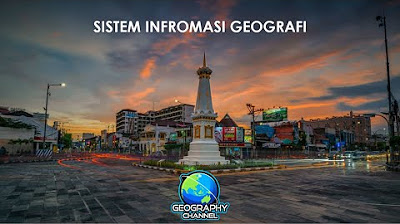Geographic Information System (GIS) in Agriculture
Summary
TLDRGeographic Information Systems (GIS) are transforming agriculture by integrating spatial data with analytics to optimize resource use, improve productivity, and promote sustainability. GIS technology helps farmers make data-driven decisions on seed placement, irrigation, fertilization, and pest management. By analyzing data on soil, weather, crop types, and more, GIS empowers farmers to reduce waste, increase yields, and minimize environmental impact. As GIS continues to evolve, its role in shaping the future of farming grows, offering farmers the tools to enhance operations and contribute to global food security.
Takeaways
- 😀 GIS technology has revolutionized traditional agriculture by integrating spatial data with analytics, enhancing decision-making.
- 😀 Precision agriculture powered by GIS optimizes resource utilization, boosts productivity, and promotes sustainability.
- 😀 GIS allows farmers to capture and analyze data tied to specific locations, offering a comprehensive view of their land.
- 😀 GIS data includes details like field boundaries, soil characteristics, crop types, weather patterns, irrigation systems, and more.
- 😀 By layering different data types, GIS helps farmers identify variations in fields such as low fertility or moisture stress areas.
- 😀 GIS guides seed placement and adjusts planting densities based on specific soil conditions for optimal growth.
- 😀 Nutrient application can be tailored based on soil analysis, reducing waste and minimizing environmental impact.
- 😀 Satellite imagery and drone surveys integrated with GIS help detect pests, diseases, and nutrient deficiencies early.
- 😀 GIS optimizes irrigation by pinpointing areas needing more or less water based on soil moisture levels and weather forecasts.
- 😀 Historical yield data combined with real-time monitoring enhances yield predictions, helping farmers with resource allocation and marketing.
- 😀 By minimizing waste and improving resource use, GIS promotes higher crop yields, better environmental sustainability, and cost savings.
Q & A
What is the traditional approach to decision-making in agriculture?
-Traditionally, agriculture has relied on experience and intuition for decision-making.
How has GIS technology impacted agriculture?
-GIS technology has transformed agriculture by integrating spatial data with analytics, allowing for precision agriculture and improving resource management, productivity, and sustainability.
What type of data is captured and analyzed through GIS in agriculture?
-GIS in agriculture captures data related to field boundaries, soil characteristics, topography, crop types, weather patterns, irrigation systems, and more.
What are some practical applications of GIS in farming?
-GIS helps with seed placement, nutrient application, detecting pest infestations, optimizing irrigation, and predicting crop yields.
How does GIS help optimize seed placement and planting density?
-GIS guides seed placement by analyzing soil conditions, ensuring optimal spacing and tailoring planting densities to specific areas of the field.
What role does GIS play in nutrient management on farms?
-GIS helps adjust nutrient application based on soil analysis, which minimizes waste and environmental impact.
How does GIS help detect early signs of crop diseases or pests?
-GIS integrates satellite imagery and drone surveys, allowing farmers to detect pest infestations, diseases, or nutrient deficiencies at early stages.
In what way does GIS optimize water usage in farming?
-GIS optimizes water usage by pinpointing areas that require more or less irrigation, based on soil moisture levels and weather forecasts.
How does GIS contribute to accurate yield predictions?
-By combining historical yield data with real-time monitoring, GIS provides more accurate yield predictions, helping farmers make informed decisions about resource allocation.
What are the environmental benefits of using GIS in agriculture?
-GIS minimizes waste and environmental impact by optimizing the use of fertilizers, water, and other resources, promoting soil health and sustainable farming practices.
Outlines

This section is available to paid users only. Please upgrade to access this part.
Upgrade NowMindmap

This section is available to paid users only. Please upgrade to access this part.
Upgrade NowKeywords

This section is available to paid users only. Please upgrade to access this part.
Upgrade NowHighlights

This section is available to paid users only. Please upgrade to access this part.
Upgrade NowTranscripts

This section is available to paid users only. Please upgrade to access this part.
Upgrade NowBrowse More Related Video
5.0 / 5 (0 votes)





